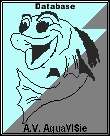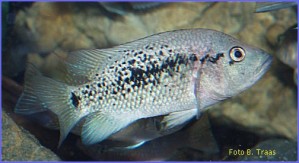 |
Herichthys bartoni |
 |
|||||||||||||||||||||
|
|
|
|
|||||||||||||||||||||
| Explanation of the symbols | |||||||||||||||||||||||
|
|
|
||||||||||||||||||||||
|
|||||||||||||||||||||||
|
Rather robust species that can be rather aggressive to other
fishes during breeding time. You should keep them
together with fishes that are not too small. The
aquarium should be set up with stones, driftwood and roots
that make hiding places. The substrate should be
sandy. Only hard plants that are anchored very well
can be used fir decoration. It is wise to raise a
group of unrelated juveniles (6-8) to sexual maturity and
allow them to pair off. The best pair should be chosen for
breeding and other pairs should be removed. You should give them large, live food. Frozen and dry food are accepted as well. A part of the food should be vegetable. Please be careful with beef heart and Tubifex. Breeding is rather easy with a good matching couple. Up to 300 eggs are laid and fertilized on a somewhat hidden substrate. After 3-4 days the eggs hatch. The parents bring the larvae to breeding pits. Both parents care for the fry a very long time. A good couple can raise several nests each year. |
|||||||||||||||||||||||
|
Brian Traas |
|||||||||||||||||||||||
 |
|||||||||||||||||||||||
|
|
|||||||||||||||||||||||
